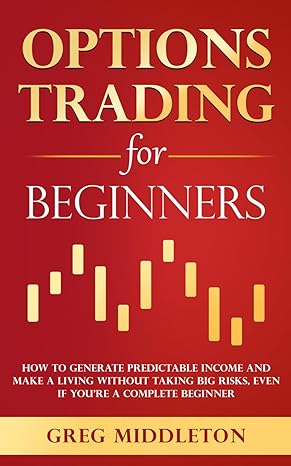Question
Question 1. (56%) Consider a two-period economy populated by one billion de- positors. A depositor is endowed with $1 before period 1 starts and chooses
Question 1. (56%) Consider a two-period economy populated by one billion de- positors. A depositor is endowed with $1 before period 1 starts and chooses whether to deposit it in a bank or keep it. If a depositor keeps the money, it will still be $1. The bank offers a demand deposit contract:
(A1) If a depositor withdraws the deposit in period 1, she/he gets $102, provided that the bank does not run out of money including the funds from liquidating investment projects. If the bank runs out of money, the depositor gets nothing.
(A2) If a depositor keeps money in the bank to the end of period 2, the depositor will get $104, provided that the bank will have enough money to honor this contract for all depositors who do not withdraw in period 1.
(A3) If the bank in period 2 will not have enough money to honor the payment to all depositors who do not withdraw in period 1, the bank will declare bankruptcy and such depositors will evenly divide the banks assets.
The bank lends to investment projects that last for two periods. Such a long-term project needs $1 as investment and, if the project is carried out to the end of period 2, the net rate of return will be 6%. If a long-term investment is liquidated in period 1, only the principal of the investment ($1) can be recovered. All deposits must be made before period 1 starts. The bank does not take deposit in period 1 or 2.
After depositing in the bank, a depositor may experience a shock in period 1. A depos- itor hit by the shock will need money in period 1 but not in period 2. A depositor not hit by the shock will need money in period 2 but not in period 1. The shocks are independent among depositors and occur to each depositor with probability 15. A depositor hit by the shock is called an impatient depositor and a depositor not hit by the shock is called a patient depositor.
The banks equity immediately before period 1 is $10 million. Assume that the bank keeps just enough reserves to serve the withdrawals of impatient depositors in period 1 and lends the remainder of funds to long-term projects. Also, no bank run is expected before period 1.
(1) (10 pts) Calculate the amount of funds that the bank lends to long-term projects. Fill in the banks balance sheet immediately after lending to long-term projects.
(2) (12 pts) Suppose that only impatient depositors are expected to withdraw from the bank in period 1. Calculate the rate of return on the banks equity.
(3) (16 pts) Define the resilience level of the bank to a run as follows: If the fraction of patient depositors who withdraw in period 1 exceeds , then all depositors will choose to withdraw; otherwise, the remaining fraction (1 ) of patient depositors will choose to keep money in the bank to the end of period 2. Calculate .
(4) (18 pts) Suppose that the banks initial equity is $ million instead of $10 million. Calculate the lowest value of that ensures the bank to be completely resilient to a bank run. What is the banks leverage with this value of ?
Step by Step Solution
There are 3 Steps involved in it
Step: 1

Get Instant Access to Expert-Tailored Solutions
See step-by-step solutions with expert insights and AI powered tools for academic success
Step: 2

Step: 3

Ace Your Homework with AI
Get the answers you need in no time with our AI-driven, step-by-step assistance
Get Started


